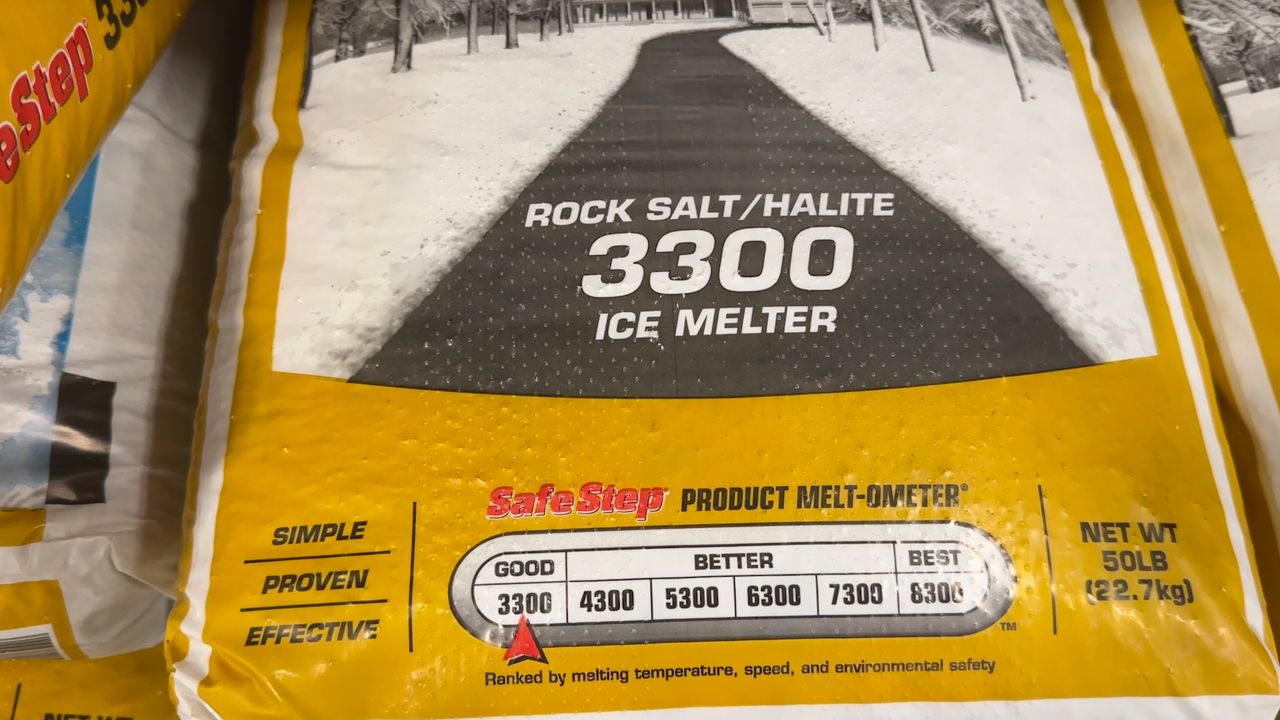MADISON, Wis. — Wisconsin is hosting Winter Salt Awareness Week from Jan. 22 through 26.
The goal is to help the public understand how the overuse of winter salt negatively affects the environment.
Volunteers across the state monitor chloride levels after heavy snowfalls.
One of these programs is the Starkweather Creek Chloride Monitoring Program in Madison.
Matt Noone oversees the program. He recently collected a water sample from the creek.
“The DNR declared Starkweather Creek as an impaired water source. Our goal from this project was to see if we could get it delisted,” said Noone.
Noone said although using winter salt has the obvious benefits of clearing roadways and sidewalks, the biggest problem is it eventually ends up in local waterways.
“This contributes to chloride levels in the lake,” said Noone. “We are finding higher and higher chloride levels in the wells, higher and higher chloride levels in the groundwater.”
He and dozens of volunteers have been collecting samples from the creek for nearly three and a half years.
Noone said they have determined that most of the chloride found in the creek is on the east side.

“A big part of this project has also been reaching out to different landowners consulting them about their salt application use and trying to educate them one proper salt usage,” said Noone.
With heavy snow fall an expected part of a Wisconsin winter, winter salt will also remain in the equation.
Don Smith is the Logistics Manager at Fleet Farm in Oconomowoc.
He said winter salt sales have picked up because of the recent snowstorms.
“Just in the last two weeks, our inventory has been chopped in half,” said Smith.
Smith believes to get the most out of winter salt, timing is key.
“The best ways to apply it is obviously right when the snowstorm is happening or right before it starts,” said Smith. “As it gets down below zero, a lot of the effectiveness of these salts won’t work. We do have a couple that go to minus 15 or minus 30, but for the most part, anything you get below zero, it starts not really working because of the temperatures.”
After collecting the sample, Noone used a testing strip to get a measure of the current chloride levels in the creek.
In a few minutes, he got a measurement of 246 milligrams per liter.
“The implications are dramatic for aquatic wildlife in particular,” said Noone.
He said this shows him that there is still too much chloride in Starkweather Creek.
That’s why he said he wants to do everything he can to protect the watershed for the area he calls home.
As part of Winter Salt Awareness Week, Wisconsin Salt Wise is putting on several live streams to teach the public the impact that winter salt has on the environment.
For more on the presentations, click here.



